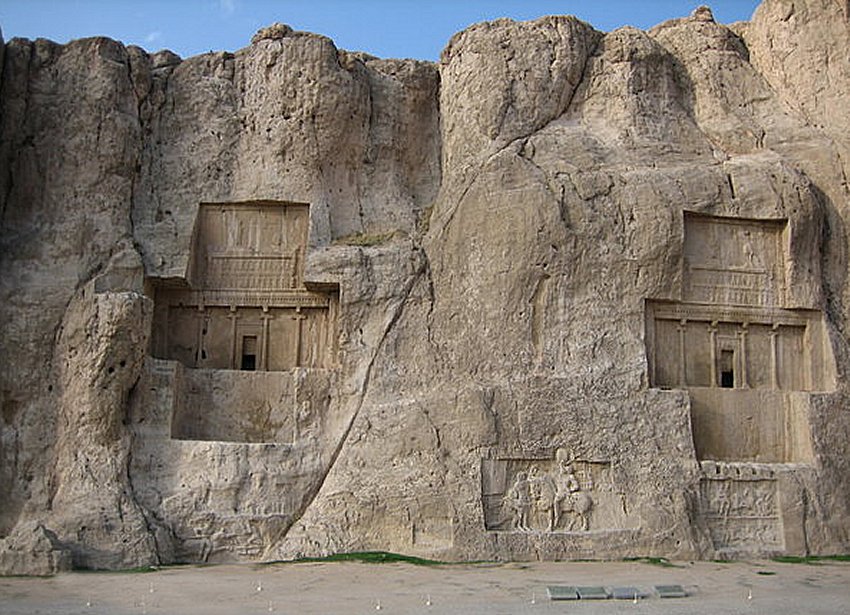Naqsh-e Rostam: Spectacular Tomb Complex With Rock Reliefs From Elamite To Sasanian Times
A. Sutherland - AncientPages.com - An incredible complex of tombs and artworks known as Naqsh-e Rostam ("Picture of Rostam"), or Necropolis, is located outside of the city of Shiraz and only a few kilometers northwest of Persepolis - the capital of the ancient Achaemenid Empire - in central Iran.
Naqsh-e-Rostam. Image credit: Iran Chamber Society
Naqsh-e Rostam monument is a perpendicular wall of rock with four similar tombs, cut considerably from the bottom of the valley.
The rock art below the tombs with sculptures from Elamite, Achaemenid, and Sassanid periods on mountains and rock is one of the unique and most beautiful examples of stone masonry of the historical and ancient period.
The Sasanian carvings are believed to represent the mythical hero Rostam (or Rustam), who fought legendary monsters such as the dragon and the White Demon and was described in the great Persian Epic of the Kings, 'Shahname,' completed in 1010 CE.
A rock relief at Naqsh-e Rostam, depicting the triumph of Shapur I over the Roman Emperor Valerian, and Philip the Arabian. Image credit: Iran Chamber Society
The four impressive rock tombs - cut at a considerable height from the bottom of the valley - are all elaborately carved into the side of a stone mountainside. The perfection of the building's right angles testifies to the skill of the builders.
The tombs belong to Achaemenid kings and are locally known as the 'Persian crosses, due to the shape of the facades of the graves.
Seven oversized and rich ornamented reliefs dedicated to the Achaemenid kings belong to the early first millennium BC.
Darius 2's tomb, Naqsh-e-Rostam. Darius The Great's Inscription at Naqshe Rostam, Iran; right: Darius, source
At the center of each cross is an entrance to each tomb, which opens into a small chamber where the king lay in a coffin. The horizontal beam of each tomb's facades is believed to be a replica of the palace's entrance at Persepolis.
Naqsh-e Rostam was already an important place when king Darius I the Great (522-486 BC) ordered his monumental tomb to be carved into the cliff.
Later, similar royal rock tombs were added, and they are believed to belong to Darius' son and successor Xerxes (486-465), his son Artaxerxes I Makrocheir (465-424), and his grandson Darius II Nothus (423-404), whose original name was Ochus. He was often called Nothus ('Bastard') because he was the son of King Artaxerxes I and a concubine from Babylon.
Left: Relief of Xerxes in Naqsh-e Rustam; Right: Artaxerxes III (Artaxšaçā) - Emperor of Achaemenid Persia. Image via Wikiwand
There is also a fifth tomb, but it's unfinished. Archaeologists are almost sure that the tombs were closed after the burial. After Alexander the Great had overthrown the Achaemenid Empire, the doors were smashed, and the graves were looted.
Today Naqsh-e Rostam is an abandoned ancient site, visited only by a small group of tourists.
Written by – A. Sutherland - AncientPages.com Senior Staff Writer
Copyright © AncientPages.com All rights reserved. This material may not be published, broadcast, rewritten or redistributed in whole or part without the express written permission of AncientPages.com
Expand for referencesMore From Ancient Pages
-
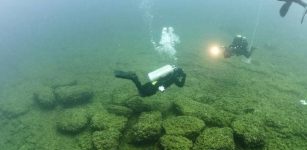 Traces Of A 9,000-Year-Old Lost Unknown Civilization Discovered In Lake Huron, Michigan
Civilizations | Aug 11, 2014
Traces Of A 9,000-Year-Old Lost Unknown Civilization Discovered In Lake Huron, Michigan
Civilizations | Aug 11, 2014 -
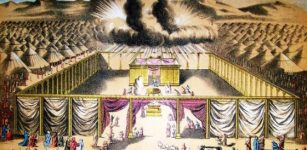 Intriguing Discovery Could Offer Proof Of The Tabernacle – Has The Dwelling Place Of God Been Located?
Archaeology | Nov 9, 2013
Intriguing Discovery Could Offer Proof Of The Tabernacle – Has The Dwelling Place Of God Been Located?
Archaeology | Nov 9, 2013 -
 Forbidden Knowledge: Secret Ancient Gates Of The Shining Ones – More Surprising Discoveries – Part 3
Featured Stories | Jul 19, 2019
Forbidden Knowledge: Secret Ancient Gates Of The Shining Ones – More Surprising Discoveries – Part 3
Featured Stories | Jul 19, 2019 -
 Stunning Ancient Roman Artifacts And Three Shipwrecks Discovered Underwater Off The Coast Off Alexandria, Egypt
Archaeology | Nov 26, 2017
Stunning Ancient Roman Artifacts And Three Shipwrecks Discovered Underwater Off The Coast Off Alexandria, Egypt
Archaeology | Nov 26, 2017 -
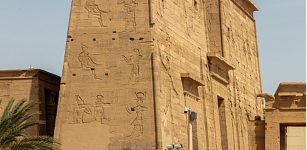 Researchers Use 21st Century Methods To Record 2,000 Years Of Ancient Graffiti In Egypt
Archaeology | Mar 31, 2023
Researchers Use 21st Century Methods To Record 2,000 Years Of Ancient Graffiti In Egypt
Archaeology | Mar 31, 2023 -
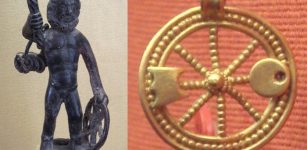 Taranis – Celtic God Of Wheel And Thunder Resembled Roman God Jupiter
Celtic Mythology | Jul 15, 2019
Taranis – Celtic God Of Wheel And Thunder Resembled Roman God Jupiter
Celtic Mythology | Jul 15, 2019 -
 European Bronze Age Treasure Of Villenna Has Artifacts Made Of Meteoric Iron
Archaeology | Feb 12, 2024
European Bronze Age Treasure Of Villenna Has Artifacts Made Of Meteoric Iron
Archaeology | Feb 12, 2024 -
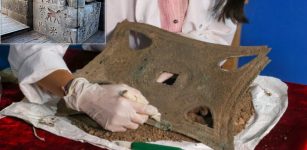 Ornamental Bronze Wall Plate Unearthed In Ayanis Castle Built By Urartian King Rusa II
Archaeology | Sep 13, 2022
Ornamental Bronze Wall Plate Unearthed In Ayanis Castle Built By Urartian King Rusa II
Archaeology | Sep 13, 2022 -
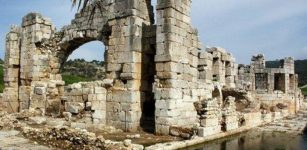 City Of Patara: Long History Of Wars And Visits Of Prominent Figures Of Ancient World
Archaeology | Jul 9, 2020
City Of Patara: Long History Of Wars And Visits Of Prominent Figures Of Ancient World
Archaeology | Jul 9, 2020 -
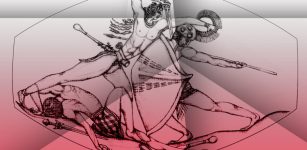 Rare Minoan Sealstone Is A Miniature Masterpiece Unearthed In 3,500-Year-Old Tomb Of Powerful Mycenaean Warrior
Archaeology | Nov 8, 2017
Rare Minoan Sealstone Is A Miniature Masterpiece Unearthed In 3,500-Year-Old Tomb Of Powerful Mycenaean Warrior
Archaeology | Nov 8, 2017 -
 Årsgång – Year Walk In The Forest – Mystical Journey To Gain Knowledge About The Future – An Ancient Swedish Ritual
Ancient Traditions And Customs | Jan 2, 2019
Årsgång – Year Walk In The Forest – Mystical Journey To Gain Knowledge About The Future – An Ancient Swedish Ritual
Ancient Traditions And Customs | Jan 2, 2019 -
 Queen Dido Of Carthage: Founder Of Prosperous City On Africa’s Northern Coast
Featured Stories | May 21, 2020
Queen Dido Of Carthage: Founder Of Prosperous City On Africa’s Northern Coast
Featured Stories | May 21, 2020 -
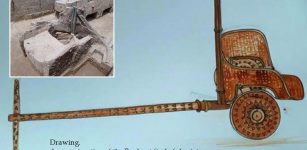 Three Bronze Age Chariots, Shields, Daggers And Decorated Coffins Unearthed In Northern India
Archaeology | Jun 7, 2018
Three Bronze Age Chariots, Shields, Daggers And Decorated Coffins Unearthed In Northern India
Archaeology | Jun 7, 2018 -
 Secret Ancient Knowledge Of Portals Leading To Unknown Realms -The Arrival And Departure – Part 1
Featured Stories | Dec 1, 2021
Secret Ancient Knowledge Of Portals Leading To Unknown Realms -The Arrival And Departure – Part 1
Featured Stories | Dec 1, 2021 -
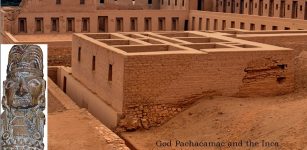 Pre-Columbian Pachacamac Site Dedicated To God Of Creation, Fire And Earthquakes In Inca Religion
Featured Stories | May 31, 2018
Pre-Columbian Pachacamac Site Dedicated To God Of Creation, Fire And Earthquakes In Inca Religion
Featured Stories | May 31, 2018 -
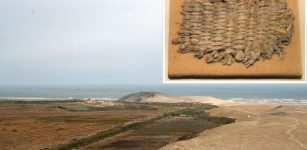 Major Discovery Of 15,000-Year-Old Artifacts Could Re-Write History Of Peru
Archaeology | May 26, 2017
Major Discovery Of 15,000-Year-Old Artifacts Could Re-Write History Of Peru
Archaeology | May 26, 2017 -
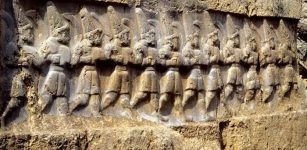 Secret Ancient Lunar Calendar May Be Hidden At A Hittite Sanctuary
Archaeology | Jul 3, 2019
Secret Ancient Lunar Calendar May Be Hidden At A Hittite Sanctuary
Archaeology | Jul 3, 2019 -
 Ancient Stone Ram Figurine – Symbol Of Abundance And Great Courage – Unearthed In Old Cemetery
Archaeology | Oct 2, 2020
Ancient Stone Ram Figurine – Symbol Of Abundance And Great Courage – Unearthed In Old Cemetery
Archaeology | Oct 2, 2020 -
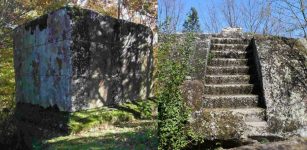 Mysterious Etruscan Stone Structures Hidden In The Malano Forest – Evidence Of Ancient Unknown High-Tech Knowledge?
Featured Stories | Dec 19, 2020
Mysterious Etruscan Stone Structures Hidden In The Malano Forest – Evidence Of Ancient Unknown High-Tech Knowledge?
Featured Stories | Dec 19, 2020 -
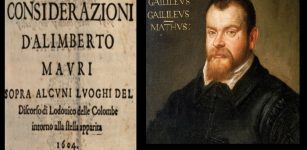 Galileo Galilei Wrote A Controversial Astronomical Treatise Using A Pseudonym
News | Oct 6, 2022
Galileo Galilei Wrote A Controversial Astronomical Treatise Using A Pseudonym
News | Oct 6, 2022

